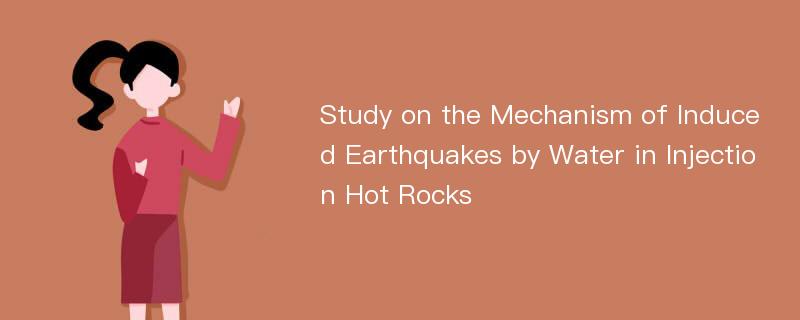
论文摘要
Geothermal energy is the heat energy stored in the earth’s interior, which is sustainable, stable, efficient recycling and renewable resource. Social and economic benefits are from hydrothermal geothermal energy. The development of another type of geothermal energy stored in hot rocks is still in the experimental stage. Some progress has been made in some demonstrative case studies. Development of geothermal resources by water injection in dry hot rocks may change underground stress state, and even trigger small or moderate earthquakes due high injection pressure and rock cooling. We can receive this problem as a multi-physical field coupling including deformation of solid framework, pore fluid under thermal evolution process. Cases of earthquake induced by underground high pressure water injection have been paid more and more attention to by scientific and engineering community. A moderate earthquake of M5.7 was induced by high pressure water injection in the case of Enhanced Geothermal System(EGS) in Pohang, South Korea, 2017(Grogoli et al., 2018; Kim et al.,2018). Six earthquakes may be triggered by production activities of oil and gas in Rocky, USA, 2011. More cases of earthquake-induced(M<4.0) by thermal development are in Cooper basin of Australia, Basel of Switzerland, and Soultz-sous-Forets of France. An earthquake of M4.7 was induced by shale gas exploitation in south-eastern Sichuan basin. The cases of earthquake-induced provide data to study the mechanism of earthquake triggering by high pressure water injection. In this paper, we used a case of high pressure water injection test in a well of GR1 at Qiabuqia, Gonghe, Qinghai province to study the mechanism of earthquake triggering by high pressure water injection. Numerical simulations on a multi-physical field coupling, including deformation of solid framework, pore fluid under thermal evolution process were completed by high performance computer. The numerical results indicated that: Cooling of surrounding rock will occur near the injection well since cooling water injection, from 509.1 K to 343.15 K. Cooling water injection has two obvious effect on cooling of surrounding rock. One is by heat conduction of solid framework and pore fluid, the other is by thermal convection of pore fluid flowing. Pore pressure will increase near the well since water injection, with magnitude less than 1 MPa. The increasing of pore pressure will be slower as the distance from the well. Tension stress will exist near the north-west of the injection well, corresponding to the direction of production well. The stress state will sharply change between the wells, which suggests that faults should be avoided to be there. Normal stress decrease from 60.59 MPa to 60.57 MPa and shear stress increase from 19.990 MPa to 19.994 MPa, respectively, on a fault with striking direction of NS at Ayihai channel, in 3 years after water injection. The changes of the stresses will increase the probability of fault activatio
论文目录
文章来源
类型: 国际会议
作者: HU Caibo,LIANG Mingjian,ZHANG Zhuqi,WU Zhao
来源: 第九届世界华人地质科学研讨会 2019-06-01
年度: 2019
分类: 基础科学,工程科技Ⅱ辑
专业: 地质学,地球物理学,新能源
单位: Key Laboratory of Computational Geodynamics of Chinese Academy of Sciences, College of Earth and Planetary Sciences, University of Chinese Academy of SciencesInstitute of Geology,China Earthquake AdministrationBeijng ZhenfangTechnology Co.,Ltd
分类号: TK52;P315
DOI: 10.26914/c.cnkihy.2019.028361
页码: 148
总页数: 1
文件大小: 57k
下载量: 2
